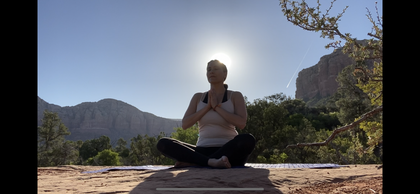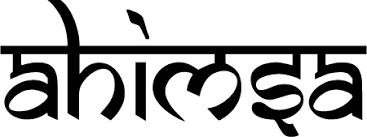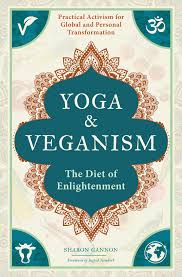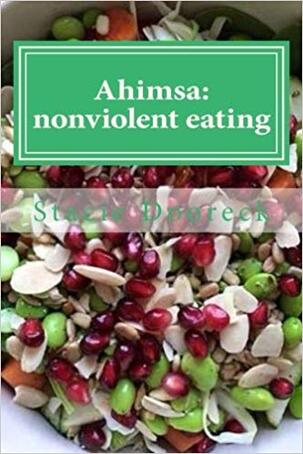|
A 5-Minute Practice to Help Ease Anxiety and feel Calm, by Stacie Dooreck
What if it took only five minutes a day to feel more calm, centered, and have more ease in the body? That is all it takes. Five minutes of meditation can be enormously helpful for your body and mind. Studies have found that it can counteract the effects of conditions such as hypertension, anxiety, diabetes, aging, and so much more. Meditation is an effective and simple tool for reducing stress, calming the mind, gaining clarity, and increasing intuition and concentration. However, it only works when you actually do it. Here are some simple tips to help you start a meditation practice: 1. Create a consistent time and space. Create a space to sit in the same location each time you meditate, if possible. This can be a corner of your room, a quiet room in your house or office where no one else is, or even a bench in a park. Try to find a space with minimal distractions and noise. The mind will start to associate that area with feeling calm and centered, which might make it easier to get into a peaceful state of mind. Try to meditate at around the same time each day. The ideal times are before sunrise or sunset, also called the amrit vela ("ambrosial hours"), when all is calm. Really any time of day is better than not making the time at all. If you cannot be consistent with a location or time of day to meditate, then do your best with what you can create, and you'll still reap the benefits. 2. Create a comfortable seat. If the body is comfortable, there is less distraction. Sit in an upright position that you feel good in. Asana is a Sanskrit word for a comfortable and steady meditation posture. If you are not comfortable sitting cross-legged (sukhasana) on a cushion or on the floor, you can sit in a chair. But try to keep the spine tall yet relaxed, as this will keep your mind alert and more readily able to concentrate. If you are sick or bedridden and can't sit upright, you can meditate lying down. However, for those who can do it, sitting upright is recommended so that the mind is less likely to drift off and fall asleep. 3. Supplement your meditation practice with yoga. Doing yoga postures is useful to keep body aches and pains away, but they also create more flexibility and ease for sitting in meditation postures. Find a class at your local community center, ashram, or studio if you have never tried yoga postures. Even a 15-minutes-a-day practice of yoga exercises and gentle postures will make meditation postures and practices more restful. 4. Remember that your eating and drinking habits contribute to your mental state. If you drink a lot of caffeine and eat foods that agitate the mind, this will hurt your meditation practice. Although you do not have to change your diet or habits to meditate, eating a vegetarian and wholesome diet that does not harm animals, according to the yogis, is the ideal diet for creating a peaceful mind, emotions, and body, which will then support the meditation practice. If changing a simple dietary habit creates peace of mind and greater health, why not consider taking small steps to create it? 5. Join a meditation group. If you find it difficult to discipline yourself to create a home practice, join a meditation group. Deepak Chopra offers a 21-day, free guided meditation journey a few times a year, and there are other groups you can join online to be connected to a global community. If you meditate on your own each day, it might give you further encouragement and support to join a group, even if it's only occasionally. Each day you listen to the mind giving reasons why you don't have the time, location, or condition to meditate is another day that goes by when you could be enjoying more inner peace. The outer conditions may never be perfect for you to create a practice, so just start where you are with a minute a day and be with your own breath. By Stacie Dooreck, Certified Yoga Instructor and author of SunLight Chair Yoga books SunLight Yoga monthly memberships and 10 self-paced courses online: yoga, Office Yoga, Meditation, Hatha, Gentle & Chair Yoga. Enjoy 15-60 min classes as hOMe. Also is an online 35+ hr Chair Yoga teacher training. Yoga is for everyone! www.sunlightyoga.com
2 Comments
Excerpt for Q & A from my Chair Yoga teacher training 35+ online course.
Link on www.sunlightyoga.com Can I teach Chair Yoga if I am not a vegetarian or vegan? This questions may arise. No, you do not have to eat any certain diet or live any certain way to teach Chair Yoga or yoga. It is your own journey to what feels comfortable and best for you. (Ashrams which are traditional yoga communities do not have fish or meat in them nor allows it however, and animals are friends to the yogis so are not included in their diet). II feel blessed, to be raised vegetarian, with the entire family. I feel blessed, at age 45 to still never have eaten animals, (didn't even try it, not even once, any fish, nor chicken nor animals, nor ever wanted to). I shifted to vegan (no eggs or dairy) 7 or so years ago. My health feels even better as a vegan than vegetarian. If you makes shifts, learn some nutrition basics though. (Ex: I take a B-12 supplement because I don't eat eggs, and add nutritional yeast for B-12 into soups and salads and meals.) The rest of nutrients I can get in my plant-based vegan diet. I even tested my blood work 6 months after shifting to vegan after 30-40 years vegetarian, and again this year (2020 at age 45) and every test showed 100% healthy for the nutrients (vit B-12 was fine and all). I do include this topic here however, even though it is each person's choice, because it is very much a part of yoga lifestyle, o eat a certain way, in harmony with the animals. Some choose to practice or teach only the yoga exercises, asanas (poses) and meditation and not change their diet or teach about it. That is each person's choice. Keep in mind also, to teach or practice yoga, you do not have to be a 'perfect' yogi or yogini (women who practices yoga)- according to the Yoga Sutras and rules. They are guidelines to learn and live by if it resonates, like an ethical guidebook so to speak. But yoga is not a religion, it is a universal path to live in health and harmony and peace with all around us and ourselves. We can just do our best and can raise consciousness, compassion and awareness, as we choose, and if we choose. Even small steps to eat healthier, more vegetables and eat less animals is a step to save animals lives, to help your health and the earth. If that is of interest to you, know that you can take your own journey with it. Some shift as in an all of nothing with their diet, and some take smalls steps. I add this topic in my course, because the ethics and yogic philosophy teaches that for nonviolence (ahimsa in Sanskrit) and compassion, for harmony of the earth and all beings (and for optimal health), the yogis are vegetarian (now really vegan to keep up with nonviolence, as cruelty is there also in the egg and dairy industries). The yogis also say it helps meditation and the yoga practice, to have a healthier body. Try it as an experiment. Practice your yoga postures on days you ate fried food, junk food or animal products (meat or dairy) vs. days you ate plant-based vegan or vegetarian. See how your body and energy feels. Which allowed you to focus more also? Our food choices effect our mind as well as our energy and body. 81 year old vegan yoga master Dharma Mittra says "if you eat food that is dead and fried, you will feel dead and fried." That is one way to make a light joke about it, yet has truth to it. Many commercial modern yoga trainings do not add this topic, because not everyone wants to be vegetarian or vegan or is, so it is not a popular topic. If they are concerned more with their business incentives of getting registrants, vs. teaching the full yogic path, that may be why some do not discuss it. I personally would not want to leave out this crucial part of healthy yogic living. However, I am not judging, nor instructing what those who take my courses 'should' or have to do as far as eating goes. It is everyone's personal choice. This topic however, may get a little controversial for some and can trigger some discomfort or strong opinions and ideas. Yet, comfort does not always make us grow and reflect and I want to be authentic to the yogic teachings as I understand them. So I didn’t want ignore it, but I’m careful not to put too much about this topic as it is an aspect, but not the only aspect of yogic living and teaching. The yoga masters and lineages and in yoga ashrams however, will not talk about eating fish or meat as part of yoga though, or allow it in their trainings or ashram communities. But even if people don’t eat vegan or vegetarian they can still go to ashrams, practice yoga and teach it. (Try adding more vegetables to your diet regardless though, and see if you feel more energy and get inspired to continue eating in a way that brings you radiant health.) I actually love the vegan eating topic now, because it makes you feel so good when you eat healthy, it helps animals and the earth so is a win-win-win for all. So overtime I might actually add some vegan cooking videos on this course, just for fun. You are ultimately control your own eating habits and choices. We all know habits are hard to break. But yet possible. Each has their own story and history to unravel with society, family and cultural teachings on eating and emotional eating habits. Finances can be a factor too in food choices and availability of foods in certain areas (food justice and social justice can be factors). The yogic path teaches us ways to minimize harm to other beings and our own bodies. I hope this section gave you 'food for thought', no pun intended. In summary, no, you do not have to be anything but yourself, and make your own educated choices when teaching yoga and Chair Yoga. But also no, yogic diet does not include living beings (no fish, meat or animals). We may also not be a "perfect" vegan or vegetarian even with good intentions, but try not to let that discourage you. Making shifts anyway towards healthier eating, in harmony with all beings can bring so many benefits. To learn more read the book (out in 2020) "Yoga and Veganism" by Sharon Gannon, founder of Jivamukti Yoga, or her prior book Yoga and Vegetarianism. Or these below: I recommended these books highly:
www.sunlightyoga.com Stacie Click here for the Ahimsa Diet page on my website “All beings tremble before violence. All fear death. All love life. See yourself in others. Then whom can you hurt? What harm can you do?” ~ Dhammapada 129-130 Historically, yogis were vegetarian, and many are now shifting to vegan. This is because the ethical basis for a yogi, even before postures are considered, is the first of the Eight Limbs of Patanjali’s Sutras: Ahimsa, which means nonviolence. If we are practicing or teaching yoga poses named after and mimicking the same animals we then eat, isn’t this supporting the same violence we fundamentally oppose? If we want to lead a more compassionate lifestyle, not to mention one that’s better for our health and the earth’s sustainability, then eating a plant-based vegetarian or vegan diet, as numerous studies now show, is one way to do so and have an enormous impact. Shifting to a compassionate way of eating does not have to be hard. There are amazing organizations doing great work to educate the masses on how to live healthily and cause the least amount of harm to animals and the earth. Mercy for Animals and PETA are two such organizations, and they even provide vegan starter kits and a plethora of online recipes and videos for ideas. Yoga Masters Dharma Mittra and Sharon Gannon of Jivamukti yoga, both based in New York City, are advocates of the idea that going vegan is necessary in order to live a true yogic lifestyle. Dharma Mittra says, “If you are interested to go deeper into yoga, you should read The Yoga-Sutras and The Hatha Yoga Pradipika. For those just interested in living a more ethical life, there’s The Dhammapada.” He also says, “The action of compassion is to see yourself in others.” Sharon Gannon, author of Yoga and Vegetarianism, says, “By enslaving other animals and abusing them through lifelong torture, degradation and eventual slaughter, we deprive them of freedom and happiness. How can we ourselves hope to be free or happy when our own lives are rooted in depriving others of the very thing we say we value most in life—the freedom to pursue happiness? If you want to bring more peace and happiness into your own life, the method is to stop causing violence and unhappiness in the lives of others. We cannot demand something that we ourselves are not willing to embody. Through the practice of yoga and veganism, we can realize that we were meant to live in harmony with all the other animals and all of life. We come to know that our physical bodies function better without having to instill fear into others and to kill them, and that there is no nutrient that we need that we can’t get directly from plant sources or from sunlight. We come to recognize that our old bodies can be transformed and become light and whole—holy bodies, used as vehicles to bring peace. The fork can be a powerful weapon of mass-destruction or a tool to lead a movement of peaceful coexistence. Eating a compassionate vegan diet will stop war, create peace in one’s body, peace with the animal nations, and peace on Earth.” A yogic diet is a vegetarian diet, one in which vegetables, fruits, nuts, grains, and dairy (in small amounts) are eaten in balance to create optimal health and vitality. Due to the harmful nature of modern factory farming to both the animals and the land, I feel a vegan diet (no animal products whatsoever) is now the more compassionate choice. It’s also interesting that so many are “going green” by recycling more and being more mindful of eating organic foods, when in fact the most support one can offer to Mother Earth is to eat less or no meat. According to PETA, “You save more water by not eating a pound of meat than you do by not showering for six months!” 2,500 gallons of water are used to make one pound of U.S. beef, and agriculture is responsible for 80 to 90 percent of U.S. water consumption per the USDA Economic Research Service. Consider this as well: according to Cowspiracy, animal agriculture is responsible for up to 91 percent of Amazon destruction. For myself, what is most important is not causing harm to innocent living beings that love and nurture their young, feel fear, tremble in pain, and want to live and enjoy life, just as humans do. I am a voice for the animals, and do hope humanity learns to live in a harmony with all of the earth’s inhabitants in this modern age. Yoga Master Sivananda says in his book, Bliss Divine, “If you want to stop taking mutton, fish, etc., just see with your own eyes the pitiable, struggling condition of the animals at the time of killing. Now mercy and sympathy will arise in your heart. You will determine to give up flesh-eating. If you fail in this attempt, just change your environment and live in a vegetarian hotel where you cannot get mutton and fish, and move in that society where there is only vegetable diet. Always think of the evils of flesh-eating and the benefits of a vegetarian diet. If this also cannot give you sufficient strength to stop this habit, go to the slaughterhouse and the butcher’s shop and personally see the disgusting, rotten muscles, intestines, kidneys and other nasty parts of the animals which emits bad smell. This will induce Vairagya (dispassion) in you and a strong disgust and hatred for meat-eating. All slaughter-houses should be abolished, and the use of animal flesh as food should be absolutely given up. Flesh-eating is unnecessary, unnatural, and unwholesome. The countless instances of reputed philosophers, authors, scholars, athletes, saints, Yogins, Rishis who lived on vegetable diet conclusively prove that vegetarian diet produces supreme powers both of mind and body, and is highly conducive for divine contemplation and practice of Yoga. “ By eating to a nonviolent way of eating and living, we can truly practice selfless service. Author: Stacie Dooreck Published also on Elephant Journal Jan. 15, 2018 Read more about this on this link. |
AuthorStacie Dooreck is the author SunLight Chair Yoga: yoga for everyone !and Yoga for Everyone! books and ebook. Stacie is a Stress Management Specialist for the Ornish Heart Disease Reversal Program in N. CA and wellness instructor of companies. Stacie is a based in Marin/Bay Area CA and is a certified Sivanadna Yoga instructor since 1995, a Kundalini Yoga and Gentle Integral Yoga Certified instructor. Archives
June 2021
Categories |
- Home
- Chair Yoga Training & Classes
- Yoga for First Responders
- Yoga for Athletes
- Yoga for Companies
- Online Classes
- Articles & Client Reviews
- Contact Stacie
- Journals: shop now!
- Cable TV Episodes
- Live Online Classes
- In the News- Videos
- Healthy Eating (Yogic Diet)
- Blog- Yogatips
- About Stacie
- Books
- Insight Timer LIVE
- Home
- Chair Yoga Training & Classes
- Yoga for First Responders
- Yoga for Athletes
- Yoga for Companies
- Online Classes
- Articles & Client Reviews
- Contact Stacie
- Journals: shop now!
- Cable TV Episodes
- Live Online Classes
- In the News- Videos
- Healthy Eating (Yogic Diet)
- Blog- Yogatips
- About Stacie
- Books
- Insight Timer LIVE
Search by typing & pressing enter






 RSS Feed
RSS Feed
